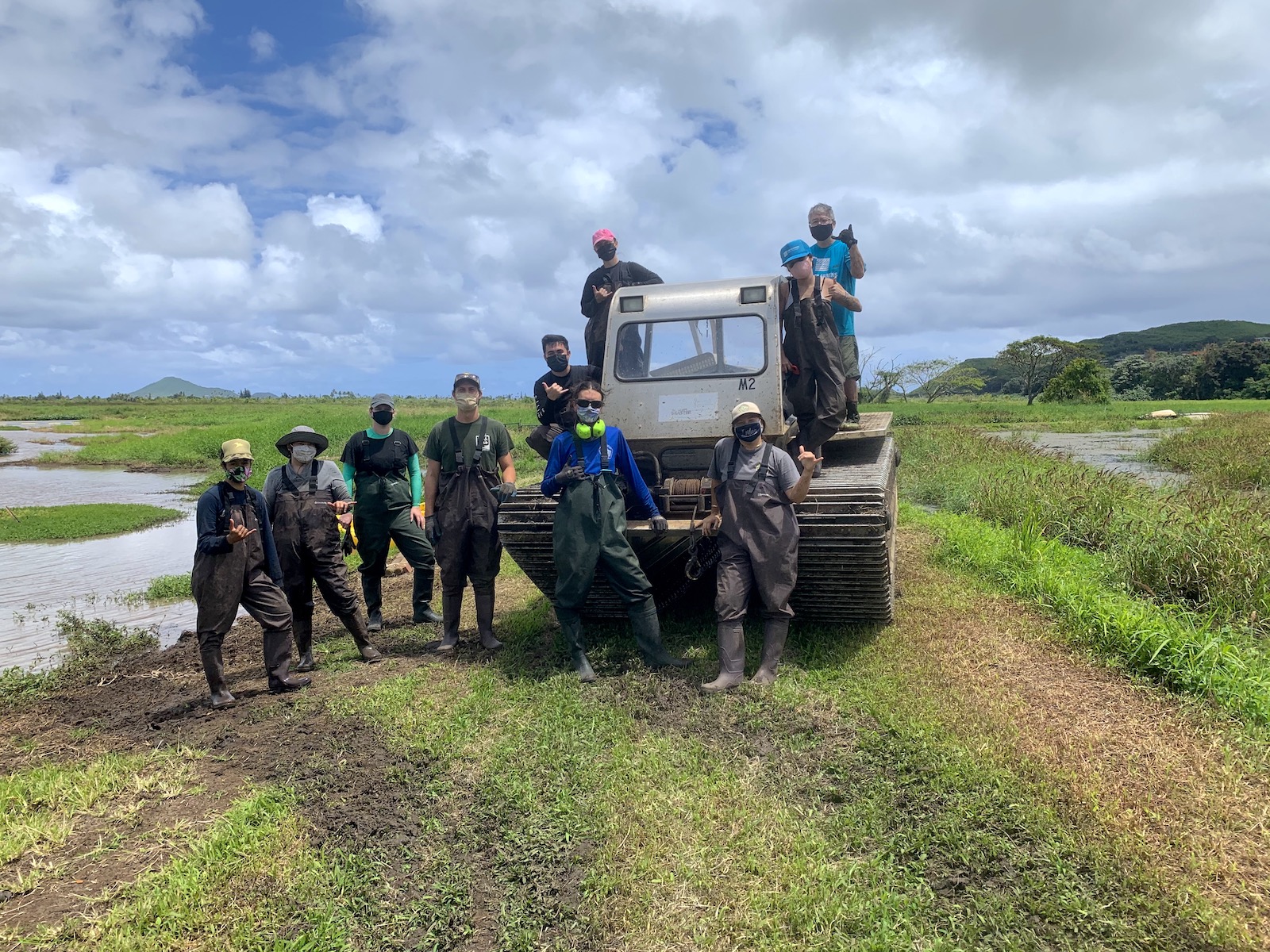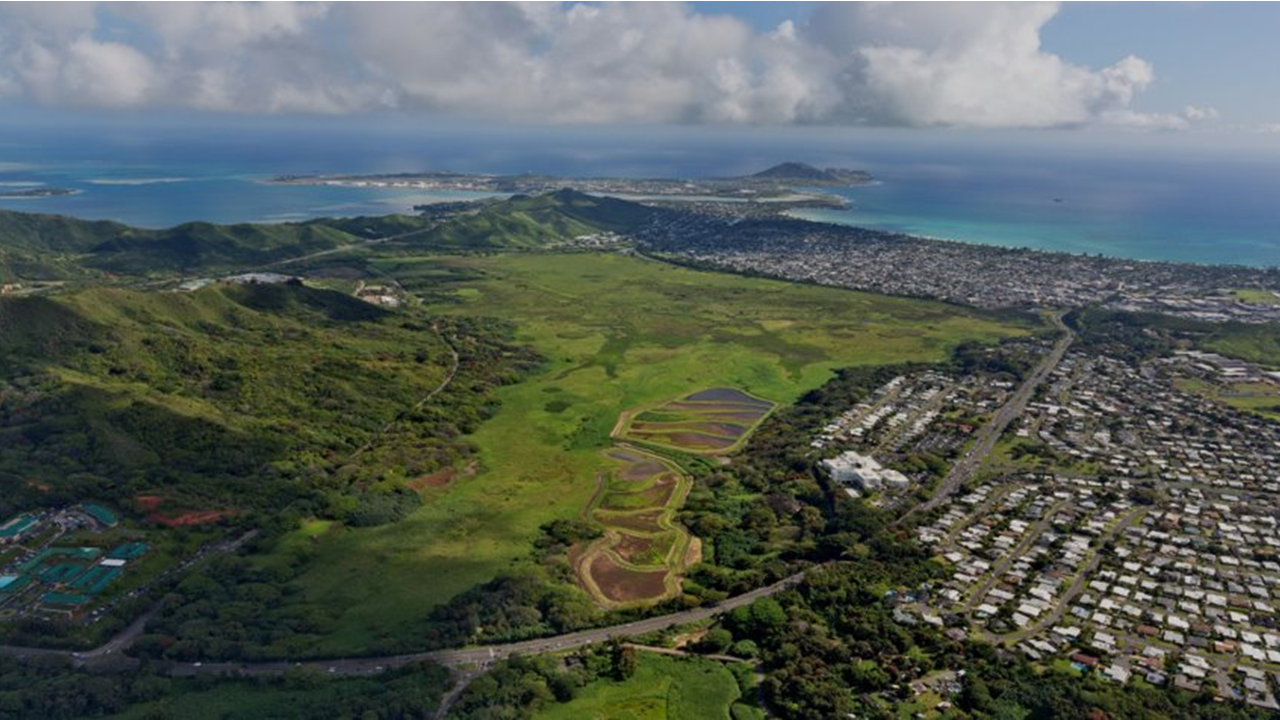Wetland management in Hawai‘i is all about keeping your foot on the gas – if managers ease up on removing invasive plant species, the non-natives are ready and waiting to take over a site once more. Kawainui Marsh State Wildlife Sanctuary on O‘ahu is no exception. The largest freshwater wetland in the state is managed by Hawaiʻi’s Department of Land and Natural Resources, Division of Forestry and Wildlife (DOFAW) and has huge potential to host resident and migratory waterbirds. DOFAW is working hard to realize that potential by beating back the constant threat of highly invasive vegetation and sediment accumulation. Their vision for the Sanctuary is a mosaic habitat of mudflats, open water, and native vegetation.
A recent project at Kawainui Marsh, supported in part by Pacific Birds, set out to improve water retention during the dry season in the restoration ponds; engage community volunteers to help restore a natural pond adjacent to the restoration ponds site; and create culturally relevant native plant out-plantings to help delineate the boundaries of several archeological sites in the restoration ponds. The project has already succeeded in troubleshooting existing solar-powered wells to create waterbird habitat during the summer dry months. Sediment removal and fence repairs will also help complete the marsh transformation.

Photo courtesy of Hawaiʻi Department of Land and Natural Resources
We are excited to engage community members to help with our restoration efforts. To restore the natural pond, we have recruited volunteers to remove invasive water hyacinth on five separate work days. We’re already seeing the results, with more open water and improved habitat for ‘alae ‘ula (Hawaiian Gallinule), 'alae ke'oke'o (Hawaiian Coot), and ae‘o (Hawaiian Stilt).
-Lindsey Nietmann, Wildlife Biologist, Hawaiʻi Department of Land and Natural Resources, Division of Forestry and Wildlife
Slowly but surely at Kawainui, the alien plants that suffocate aquatic life and push out some of most charismatic and endangered Hawaiian birdlife are being replaced with native vegetation. In addition, at least 400 native plants (ahu’awa, pu’u ka’a and ti) have been put in to delineate the boundaries of several important archaeological sites, making this project of high value to both people and wildlife.

Photo courtesy of Hawaiʻi Department of Land and Natural Resources
